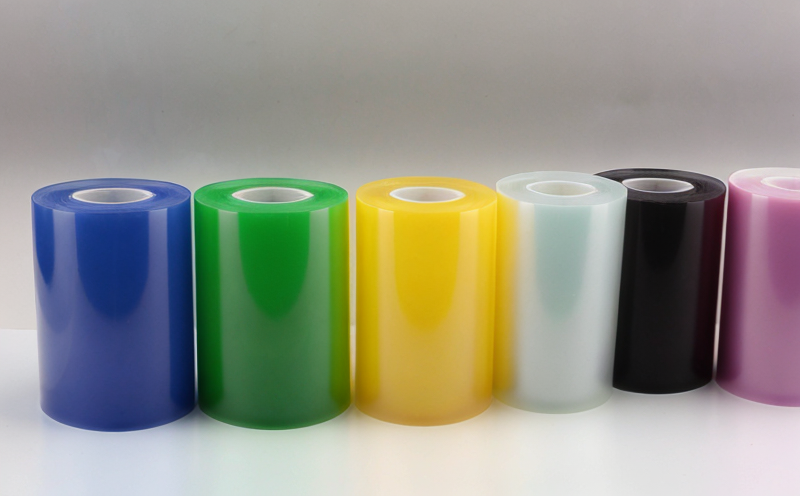ASTM G154 UV Resistance Testing of Plastic Sheets
The ASTM G154 standard is widely recognized in the polymer and plastics testing sector as a critical method for evaluating the durability of plastic films and sheets under ultraviolet (UV) radiation. This test is particularly important for ensuring that materials used in outdoor applications, such as automotive components, building materials, and consumer goods, maintain their integrity over time.
The primary goal of ASTM G154 UV resistance testing is to simulate the effects of long-term exposure to natural sunlight, which includes both visible light and ultraviolet radiation. The standard specifies a series of accelerated aging tests that are designed to mimic the environmental conditions plastic materials encounter in real-world applications. This allows for early detection of potential issues before products reach the market.
The test typically involves exposing plastic samples to a combination of UV-A, UV-B, and visible light sources in a controlled environment. The duration of exposure can vary depending on the desired outcome; however, it is common to run tests for up to 1000 hours (approximately 41 days) under high-intensity lamps that replicate the energy distribution found in sunlight.
Once the testing period has concluded, a series of visual inspections and quantitative measurements are performed. These may include assessing color change, loss of gloss, physical property changes such as tensile strength or elongation at break, and any other relevant characteristics. The results provide insight into how well the material has withstood exposure to UV radiation.
ASTM G154 is often used in conjunction with other standards like ISO 4892-3 for further validation of test results. These complementary tests help ensure that the findings are consistent across different laboratories and provide a more comprehensive understanding of material performance.
Why It Matters
The durability of plastic sheets is crucial in various industries, especially where products are exposed to outdoor environments. Ensuring that these materials can withstand UV radiation helps manufacturers produce longer-lasting and more reliable products. By conducting ASTM G154 tests early in the development process, companies can identify any weaknesses or issues before they become costly problems during production.
Additionally, compliance with this standard is often a requirement for products intended for sale in specific markets or regions. For example, automotive manufacturers must ensure that their parts meet certain durability standards to withstand harsh environmental conditions. This not only protects the reputation of the manufacturer but also ensures consumer safety by preventing early failures.
ASTM G154 testing also aids in product differentiation. By demonstrating superior UV resistance, companies can market their products as premium or eco-friendly options that are environmentally friendly and sustainable over a longer period.
Scope and Methodology
| Parameter | Description |
|---|---|
| Specimen Preparation | The specimens should be cut into strips approximately 25 mm wide and at least 100 mm long. They must be free from defects that could affect the test results. |
| Light Sources | UV-A, UV-B, and visible light are used to simulate natural sunlight conditions. The relative spectral energy distribution of the lamps should match those specified in the standard. |
| Test Duration | The test duration can vary based on the desired outcome but is typically set for 500, 1000, or even longer hours. The exact time depends on the specific needs of the application. |
| Environmental Control | The test chamber must maintain a controlled temperature and relative humidity to simulate real-world conditions accurately. |
| Data Collection | Visual inspection, color change measurement (using spectrophotometers), and physical property testing are conducted before and after the exposure period. |
The methodology outlined in ASTM G154 ensures that all tests are conducted under consistent conditions, providing reliable and repeatable results. This consistency is essential for comparing data across different laboratories and ensuring compliance with industry standards.
Industry Applications
- Automotive manufacturing: Ensuring that exterior components like bumpers, grilles, and trim do not deteriorate over time.
- Building materials: Verifying the longevity of roofing membranes, siding, and windows.
- Consumer goods: Testing packaging materials to ensure they remain intact and visually appealing over extended periods.
- Furniture manufacturing: Evaluating outdoor furniture components for colorfastness and durability.
The versatility of ASTM G154 makes it applicable across multiple sectors, from consumer products to industrial applications. Its ability to provide insights into the long-term performance of materials is particularly valuable in industries where aesthetics and functionality are critical factors.





